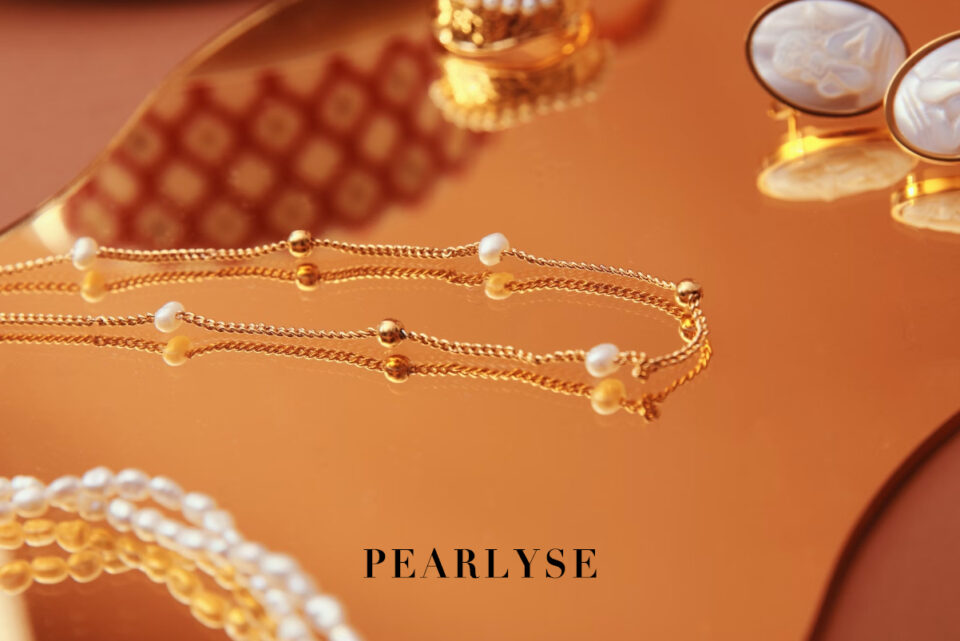Pearls, a symbol of elegance and grace, have been coveted in the realm of pearl jewelry for centuries. Brands like Pearlyse have mastered the art of curating these precious gems, offering a range of exquisite pearl jewelry that embodies luxury and sophistication. The allure of pearls lies in their natural beauty, each piece telling a story of its journey from the depths of the sea.
However, with the proliferation of imitations in the market, it’s crucial for connoisseurs and enthusiasts alike to distinguish genuine pearls from the fakes. This article will guide you through the nuances of identifying real pearls, ensuring that your investment in brands like Pearlyse is both authentic and valuable.
Identifying Real Pearls vs. Fake Pearls

Real pearls are unique in their formation, as they are created by living organisms – oysters and mollusks. Each pearl is formed over time, layer by layer, which lends them their distinct characteristics. In contrast, fake pearls are often mass-produced using glass, plastic, or other materials, lacking the subtle nuances of their natural counterparts.
Surface Examination
A key indicator of a pearl’s authenticity is its surface. Real pearls typically have slight imperfections and a unique, organic texture. When you rub a real pearl against your teeth, it should feel slightly gritty, not smooth like its imitation counterparts. Additionally, genuine pearls are denser and thus heavier than artificial ones.
Examining the Beads
Closely inspecting the beads of a pearl necklace can reveal much about their authenticity. Real pearls should be mostly uniform in color and possess a smooth, even texture with minimal blemishes. By rubbing two pearls together, a real pearl’s surface should feel slightly abrasive, a characteristic absent in fakes.
Checking for Luster
Lustre is the reflective quality or shine of a pearl, and it’s a crucial factor in determining its authenticity. Real pearls exhibit a deep, radiant glow that emanates from within, whereas fake pearls often have a superficial, shallow shine.
Testing for Smoothness
Real pearls are renowned for their smooth texture. However, upon closer examination, they reveal a slightly uneven surface, unlike the perfect uniformity of artificial pearls. Additionally, a string of real pearls will be knotted between each pearl to prevent them from rubbing against each other.
Looking for Irregularities
Genuine pearls are seldom perfectly round or uniform. Their irregularities, such as bumps or minor variations in shape and color, are indicators of their authenticity. Overly glossy or perfect pearls are often tell-tale signs of imitation.
Valuing the Necklace
The value of a real pearl necklace extends beyond its monetary worth; it’s about the
beauty and uniqueness that each pearl brings. When evaluating a necklace, consider the pearls’ lustre and texture. Genuine pearls will often have a deep, rich shine and a slightly uneven surface due to their natural formation. Moreover, when two real pearls are rubbed together, they should produce a gritty feeling, a sensation you won’t find with fakes. Visible flaws or minor imperfections on the pearls can also indicate their authenticity, as no two natural pearls are exactly alike.
Easy Identification Techniques at Home
Even without professional equipment, you can perform some simple tests to gauge the authenticity of your pearls:
- Tooth Test: Gently rub the pearl against the front of your teeth. Real pearls will have a distinct gritty texture, while fake ones will feel smooth.
- Lustre Test: Observe the pearls under natural light. Real pearls exhibit a subtle sheen and depth of color that artificial pearls, often overly glossy or dull, cannot replicate.
- Weight Test: Real pearls have a certain heft to them due to their dense composition. They should feel heavier than plastic or glass beads of similar size.
- Surface Inspection: Look for slight irregularities or imperfections on the pearl’s surface. The uniqueness of each pearl is a hallmark of its authenticity.
- Drill Hole Examination: The holes in real pearls are usually small and neat, while fake pearls often have larger, more irregular holes.
Caring for Pearls
Real pearls require careful handling:
- Avoid Direct Sunlight: Prolonged exposure to sunlight can damage pearls, causing them to lose their lustre and become dry.
- Proper Storage: Store pearls in a dark, cool place away from humidity. A soft cloth pouch or a lined jewelry box is ideal.
- Regular Cleaning: After wearing, gently wipe pearls with a soft cloth to remove any residue or body oils.
- Professional Inspection: Periodically, have your pearls inspected by a professional jeweler for restringing and cleaning.
Determining whether pearls are real involves a blend of observation and simple tests. The allure of genuine pearls lies in their natural imperfections, weight, and unique lustre. By understanding these key characteristics and practicing proper care, you can enjoy the timeless elegance of real pearls and ensure they remain a cherished part of your jewelry collection.